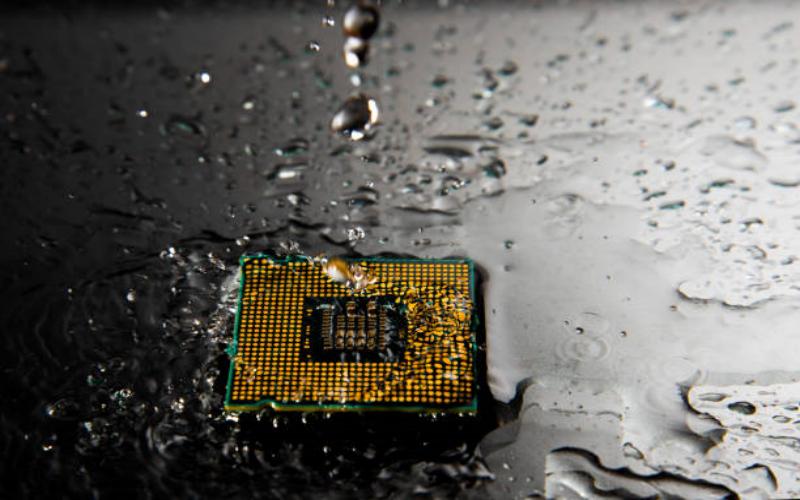The Basics of Liquid Cooling
Liquid cooling of electronic equipment refers to the process of using a liquid, usually water or a specialized coolant, to dissipate heat generated by electronic components. This method offers an alternative to traditional air cooling, which can sometimes be insufficient for high-performance systems that generate significant heat.
How Does Liquid Cooling Work?
Liquid cooling systems consist of several key components, including a pump, tubing, heat exchangers, and a coolant. The process begins with the pump circulating the coolant through the system, typically passing through a cold plate or block in direct contact with the electronic components. As the liquid absorbs heat, it flows back to the heat exchanger, where it releases the heat into the surrounding environment before returning to the pump to repeat the cycle.
The Advantages of Liquid Cooling
Liquid cooling offers numerous advantages over air cooling for electronic equipment. Firstly, it provides superior heat dissipation capabilities, allowing for more efficient cooling and preventing overheating. This is particularly important for high-performance systems such as gaming PCs, servers, and data centers.
Secondly, liquid cooling systems are generally quieter than air cooling solutions, as the absence of fans or the use of low-speed fans reduces noise levels. This can be highly beneficial for environments where noise reduction is a priority, such as recording studios or offices.
Furthermore, liquid cooling can help extend the lifespan of electronic components by maintaining lower operating temperatures. Heat is a major factor in component degradation, and by effectively removing heat, liquid cooling reduces the risk of premature failure and improves overall system reliability.
Types of Liquid Cooling Systems
There are two primary types of liquid cooling systems: open-loop and closed-loop. Open-loop systems involve a continuous flow of coolant, while closed-loop systems rely on a sealed loop where the coolant does not escape. Closed-loop systems are typically more popular due to their simplicity and ease of maintenance.
Within closed-loop systems, there are further variations such as all-in-one (AIO) coolers and custom loop setups. AIO coolers come pre-filled and are relatively simple to install, making them a popular choice for beginners. Custom loop setups, on the other hand, allow for greater customization and can be tailored to specific cooling requirements.
Applications of Liquid Cooling
Liquid cooling finds applications in various electronic devices and systems. One of the most common examples is in gaming PCs, where enthusiasts and professionals utilize liquid cooling to achieve optimal performance and keep temperatures under control during intense gaming sessions.
Similarly, liquid cooling is widely used in servers and data centers, where the efficient removal of heat is crucial for maintaining stable operation and preventing downtime. This is especially important in large-scale data centers that house numerous servers in close proximity.
Other applications of liquid cooling include high-performance workstations, overclocked systems, and even some industrial equipment that generates substantial heat during operation.
Considerations and Potential Challenges
While liquid cooling offers several benefits, there are some considerations and potential challenges to be aware of. Firstly, liquid cooling systems can be more expensive to implement compared to traditional air cooling solutions. The cost of components, installation, and maintenance should be factored in when considering liquid cooling.
Additionally, liquid cooling systems require regular maintenance to ensure optimal performance. This includes monitoring coolant levels, checking for leaks, and cleaning or replacing filters. It is essential to follow manufacturer guidelines to avoid any potential issues.
The Future of Liquid Cooling
As electronic devices continue to become more powerful and generate increasing amounts of heat, the demand for effective cooling solutions will rise. Liquid cooling is well-positioned to meet these demands, offering superior heat dissipation and improved performance compared to air cooling.
Advancements in liquid cooling technology, such as the development of more efficient pumps and coolant formulations, could further enhance the capabilities and reliability of liquid cooling systems. This could lead to wider adoption across various industries and applications.
Conclusion
Liquid cooling of electronic equipment provides an efficient and reliable method of dissipating heat generated by electronic components. Its superior heat dissipation capabilities, noise reduction, and extended component lifespan make it an ideal choice for high-performance systems. While there are considerations and potential challenges, the future of liquid cooling looks promising as technology continues to evolve and improve.

